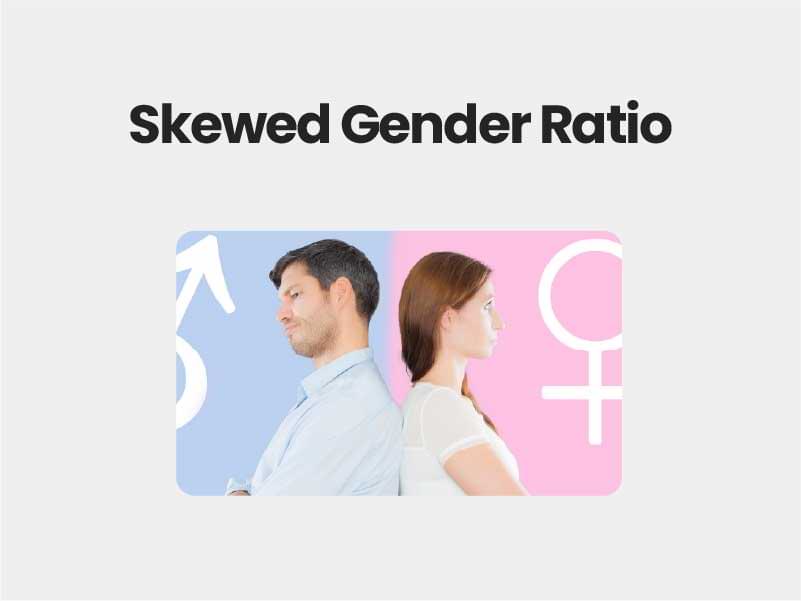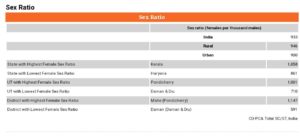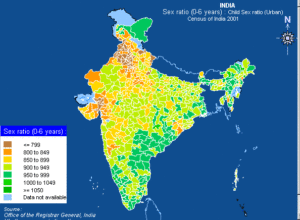Companion@360 → 7 Month programme to sharpen your writing skills → REGISTER NOW

Skewed Gender Ratio
India’s problem of gender imbalance may be deepening, with virtually all corners of the country now affected by a skewed sex ratio at birth.
Various Sex Ratio Report:
- ‘Status of Sex Ratio at Birth in India’ which mentioned that there has not been any change in the sex ratio at birth in India from 2001-2017–the number of girl children born is much less than what is the general or natural norm.
- It was brought out by the Indian Association of Parliamentarians for Population and Development (IAPPD).
- The report estimated that India’s Total Fertility Rate (TFR) was around 2.2 in the year 2018, which is close to the replacement rate of 2.1. This clearly marks the success of government measures to bring population control.
- The United Nations Population Fund (UNFPA) State of World Population 2020 held that sex ratio at birth in India is lower than all the countries in the world except China.
Reason for Skewed Gender Ratio:
- Son-Preference
- Social Practices
- Counter Effect of Rising in Income
- Gender Bias
Issues Related to Lower Sex ratio at Birth:
- There are concerns that skewed sex ratios lead to more violence against both men and women, as well as human trafficking.
- Adverse ratio results in a gross imbalance in the number of men and women and its inevitable impact on marriage systems as well as other harms to women.
- In India, some villages in Haryana and Punjab have such poor sex ratios that men “import” brides from other States.
- Gender-imbalance
Government Initiatives:
- Beti Bachao, Beti Padhao
- Pre-Conception and Pre-Natal Diagnostic Techniques (PCPNDT) Act, 1994
- Accredited Social Health Activist (ASHA)
- Drugs Technical Advisory Board
Way Forward:
- Stringent Enforcement of Law
- Bringing Behavioural Change
- Sensitizing Youth


